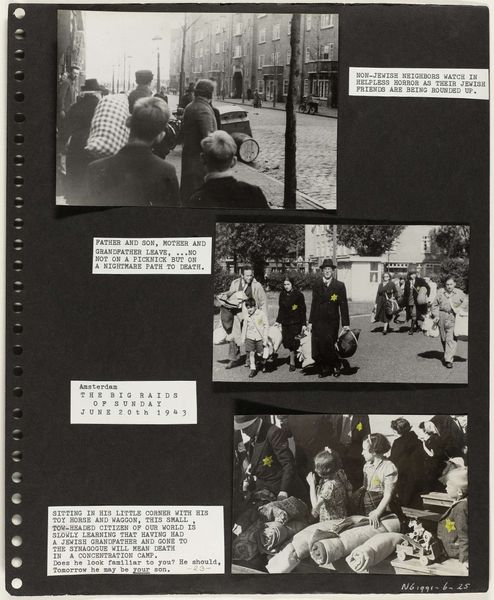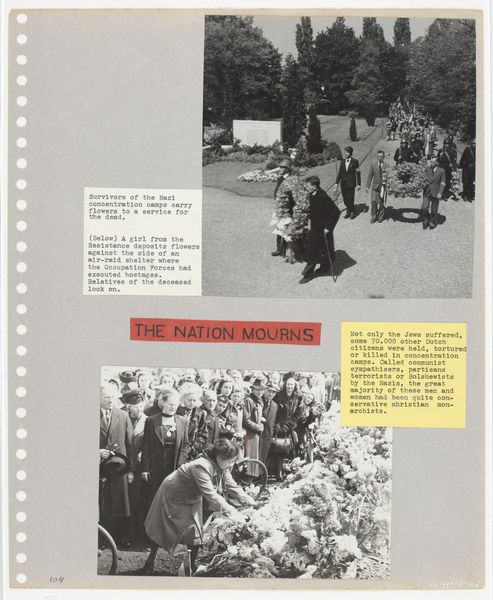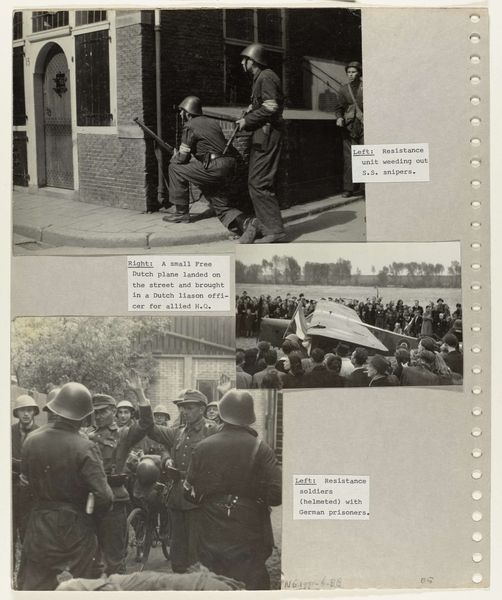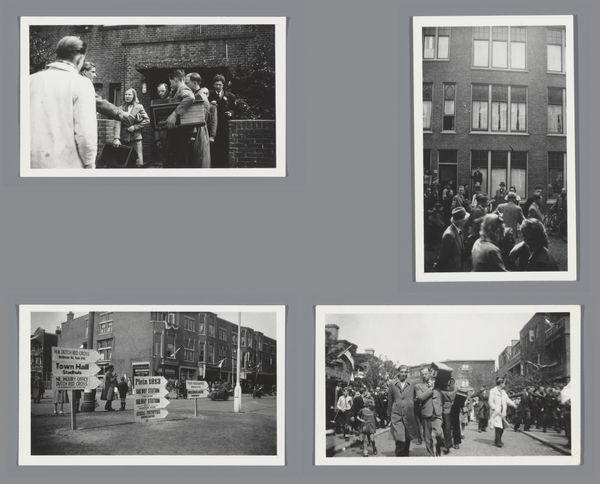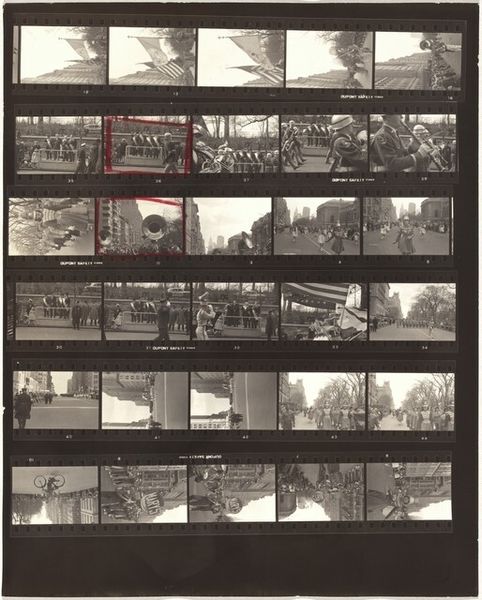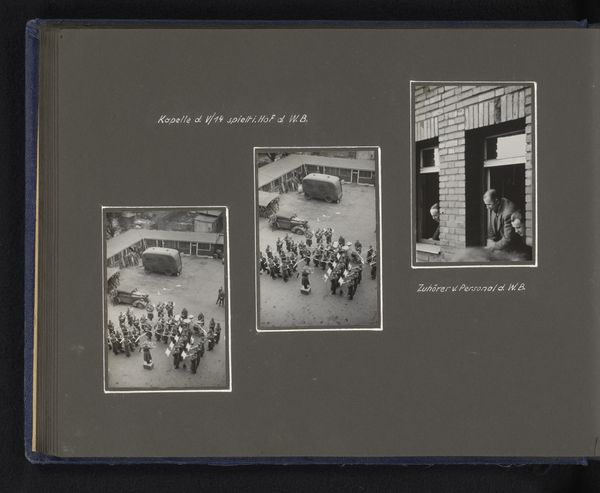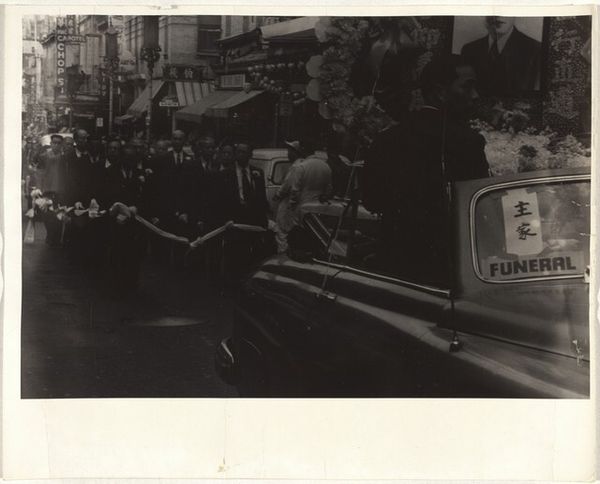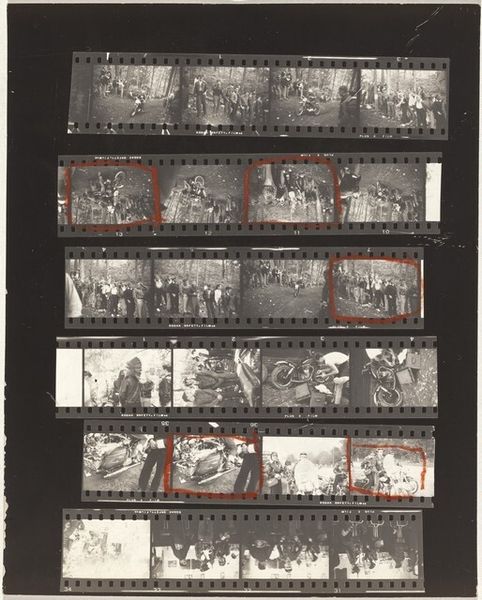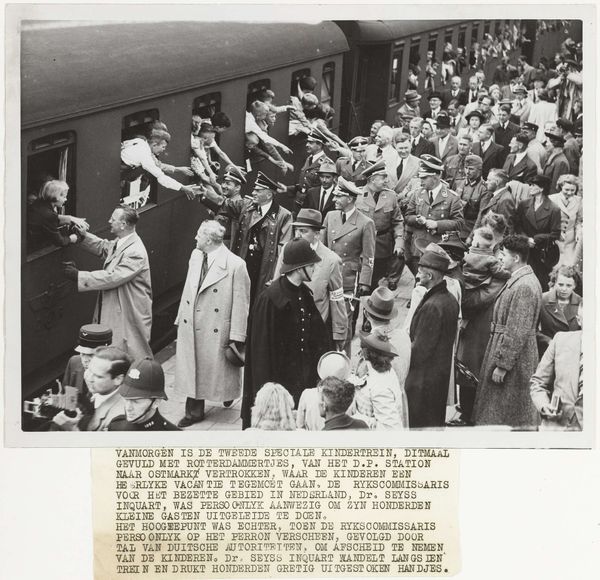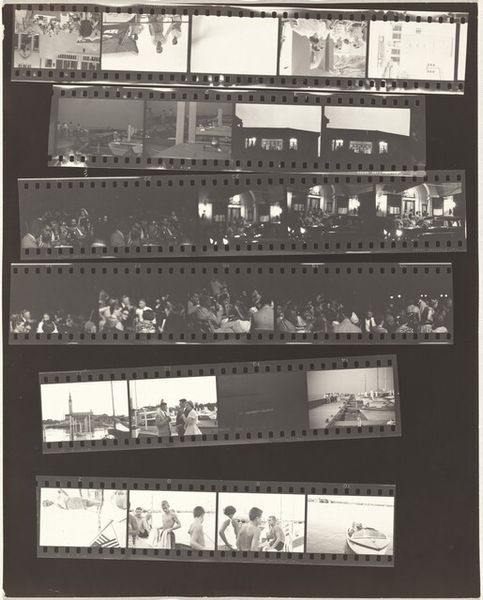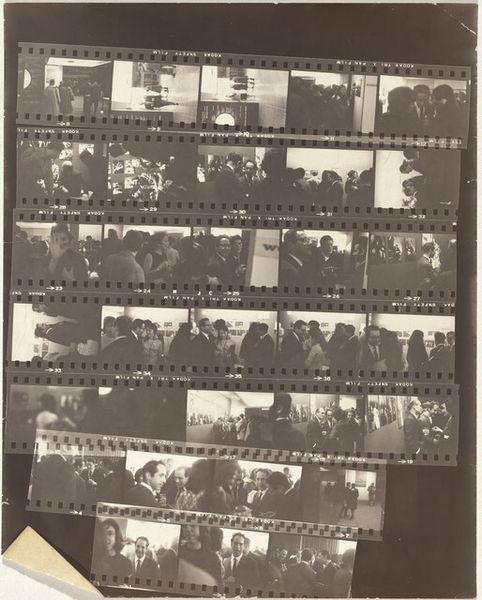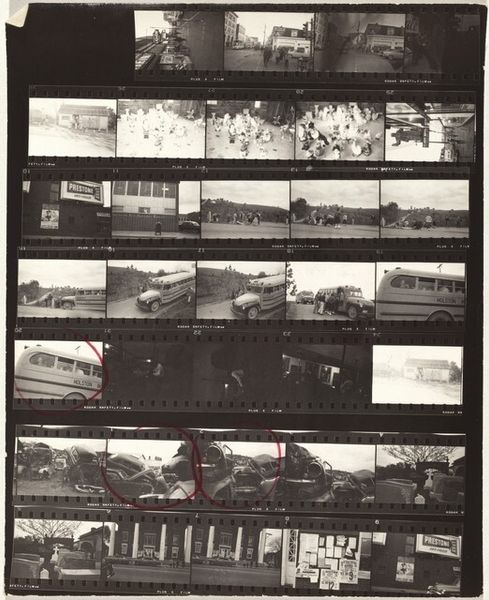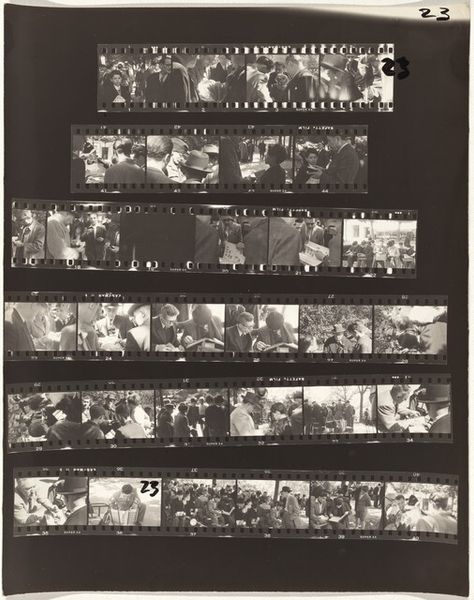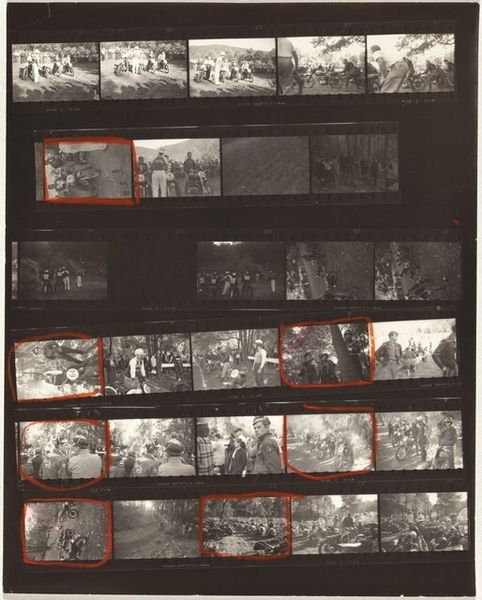
photography, photomontage, gelatin-silver-print
#
portrait
#
dutch-golden-age
#
social-realism
#
archive photography
#
photography
#
historical photography
#
photomontage
#
gelatin-silver-print
#
history-painting
Copyright: Rijks Museum: Open Domain
Curator: This arresting image is titled "Jodenvervolging in Amsterdam," documenting the persecution of Jews in Amsterdam between 1941 and 1943. It's held here at the Rijksmuseum. Editor: The stark monochrome and photomontage layout give it a chillingly detached feel, almost like an official record, but the content speaks of human tragedy. Curator: Exactly. Look at the gelatin-silver print technique. This choice of materials highlights the propaganda and bureaucratic nature of the persecution. The photomontage style emphasizes the systematic processing of Jewish citizens as if they were objects, contrasting their humanity. It reminds us that persecution always has its roots in material structures. Editor: Yes, I see the formal juxtapositions amplifying the horror. The visual rhythm created by the rows of trucks, the lines of people being marched, and the arrangement of images evoke a strong feeling of regimentation. The grayscale flattens the space, robbing the subjects of any depth or escape, adding to this sense of oppression. Curator: Think about the labor involved. From the photographer and the developing process to the act of cutting and pasting into a deliberate montage. Even the circulation of this image as a form of documentation speaks to the dehumanizing effect of institutional violence and its systematic application within society. This extends beyond just a captured moment; it involves the manufacturing and dissemination of a particular ideology. Editor: Ultimately, it is a profound reflection on state power, visual strategies and what the human eye and camera were enabled and forced to see. I'm struck how something assembled in this fashion communicates not merely data, but trauma that continues to resonate across decades. Curator: Precisely, and that is how we are challenged to look at how photographs play a material role in reflecting back upon that same troubled History.
Comments
No comments
Be the first to comment and join the conversation on the ultimate creative platform.
